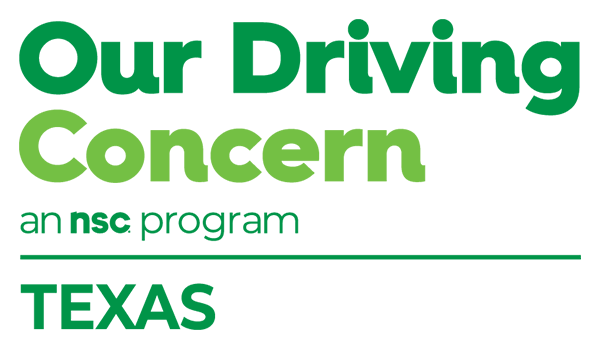Safety Coach
Speed Toward Solutions
During the pandemic, traffic volume has decreased on roads across the U.S., but traffic fatalities have increased at a disproportionate rate. In part, this can be traced to speeding, distracted driving and even not wearing a seat belt – all reckless driving behaviors. Too many drivers see open roads and think they have been given the green light to put the pedal to the metal.
Less traffic does not mean a driver’s responsibilities are any different or that the speed limit does not apply. Engineers determine the safest speeds for each roadway based on many factors.
Drivers are quick to justify their poor driving choices. They have a lot of their mind, if they multitask they can accomplish more, they have had a terrible day and they want to get home and relax – fast. Or, maybe they’re trying to make up time because they’re running late on a work delivery. What they forget is they are putting themselves and others at risk. Or, maybe it’s not forgetting, but not making safe driving their only priority behind the wheel.
Speeding makes it harder to react to situations as they unfold in real time, reduces a driver’s ability to steer safely around curves or objects in the road and increases the force of impact in a crash. What does this mean to you? Your company vehicles may be taking a beating. Your employees and/or their family members are the ones being hurt or killed.
The time is right for you to speed up your road safety efforts with micro learning.
We can help. We have bite-size transportation safety modules ready for quick consumption by your employees, including an e-learning session on aggressive driving. The aggressive driving module is one of five newly updated e-learning opportunities we offer addressing risky driving behaviors that confront all employers.
Check them out here. Then, plan a five-week road safety training course. At the end, present certificates of completion to those who pass the final quiz. By dividing your training into chunks, you likely will be able to keep everyone focused and engaged from start to finish.
During the pandemic, we’ve learned it is increasingly more likely for people to become distracted and disengaged. Their minds are racing. Their thoughts are elsewhere. Can they feed their families? Pay their mortgages? What does this mean to you? The time is right to divide training into chunks:
- Conduct a five-minute safety talk: Use our Safety Huddle sheet on Speed to get started
- Print and display this popular poster: Don’t Be a Speed Demon
- Catch employees coming or going with a traffic safety video presentation: Share this silent looping file on your lobby TV monitors to provide quick bits of education
The pandemic has taught us to adapt to our circumstances. And it has taught us that road safety must remain a high priority item.
Tailgate Talk
Find a Pot of Safety Gold
As St. Patrick’s Day approaches, you may spot folks decked out in green clothing or a funny leprechaun hat. Or you may catch wind of people thirsting for green beer. Of course, there is nothing wrong with having a little fun. Problems arise when folks don’t plan ahead.
St. Patrick’s Day annually ranks as one of the top U.S. drinking “holidays” – right alongside Mardi Gras, Cinco de Mayo, Blackout Wednesday, Fourth of July and New Year’s Eve. In fact, 280 lives were lost in drunk-driving crashes during the St. Patrick’s Day holiday period over a five-year span from 2015 to 2019, according to the National Highway Traffic Safety Administration. That’s about 55 deaths every year. One is too many. These are preventable.
A big part of the cost of these crashes is paid by employers. And it’s not just crash costs that take a toll. Employees who engage in heavy alcohol or illicit drug use are 33% less productive than their co-workers and on average cost their employers $7,000 a year due to on-the-job hangovers, absenteeism and their overall impact on others, according to the DWI Resource Center.
Small- and mid-size businesses often are at a disadvantage because they are not always equipped to screen job applicants. Find out how much alcohol use is costing your business: Use this Alcohol Cost Calculator.
Behind the wheel, there is no such thing as the luck of the Irish. Here are some ways to cut costs and ensure employees and their loved ones place a premium on safety.
Start with education. Share these St. Patrick’s Day Facts, compiled from a variety of sources, including NHTSA, the U.S. Census Bureau and the National Retail Federation:
- In America, more than $6 billion is spent every year on St. Patrick’s Day celebrations – that’s an average of $43 per person
- Beer sales increase by more than 170%
- Sales of spirits increase by more than 150%
That’s a lot of green beer and a lot of drinking, right? Remind everyone at your location: If you’re going out, plan ahead for a safe ride home. Then, provide safety solutions:
- Print and display: Designated drivers are good-as-gold friends. We’ve created this free poster for you to share in public spaces. It’s new – and it’s eye-popping!
- Five-Minute Safety Talk: Use our free Safety Huddle sheet to address impaired driving. During your discussion, ask what it means to go with the flow. Engage employees by soliciting their responses.
- Introduce Choice Theory: Dr. William Glasser’s research – first published more than 20 years ago – still can be useful in promoting transportation safety today. He outlines how individuals are empowered to take responsibility for their own choices and can support others in taking ownership of their choices. Explain: What is Choice Theory? Download: Little Book of Choice Theory.
Here is hoping these tools help you find a pot of safety at the end of your rainbow.


